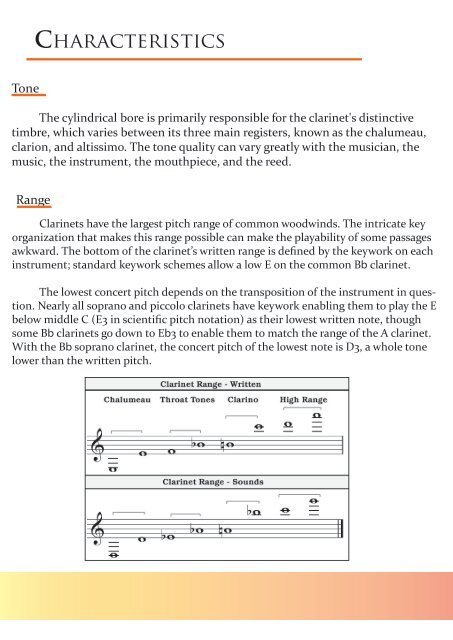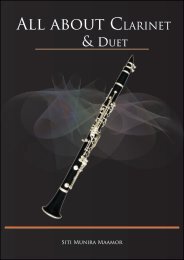Create successful ePaper yourself
Turn your PDF publications into a flip-book with our unique Google optimized e-Paper software.
Characteristics<br />
Tone<br />
The cylindrical bore is primarily responsible for the clarinet's distinctive<br />
timbre, which varies between its three main registers, known as the chalumeau,<br />
clarion, and altissimo. The tone quality can vary greatly with the musician, the<br />
music, the instrument, the mouthpiece, and the reed.<br />
Range<br />
Clarinets have the largest pitch range of common woodwinds. The intricate key<br />
organization that makes this range possible can make the playability of some passages<br />
awkward. The bottom of the clarinet’s written range is defined by the keywork on each<br />
instrument; standard keywork schemes allow a low E on the common Bb clarinet.<br />
The lowest concert pitch depends on the transposition of the instrument in question.<br />
Nearly all soprano and piccolo clarinets have keywork enabling them to play the E<br />
below middle C (E3 in scientific pitch notation) as their lowest written note, though<br />
some Bb clarinets go down to Eb3 to enable them to match the range of the A clarinet.<br />
With the Bb soprano clarinet, the concert pitch of the lowest note is D3, a whole tone<br />
lower than the written pitch.






